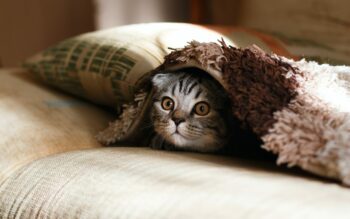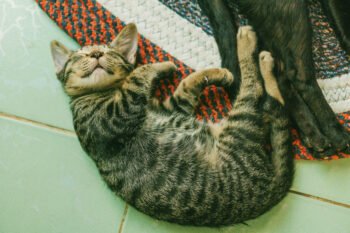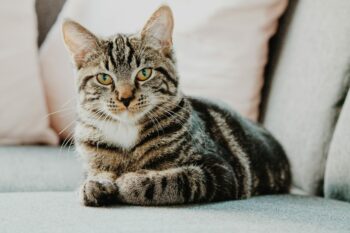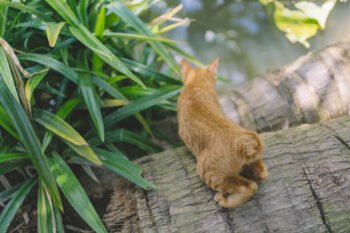We are what we eat and, for cats, diet may play a role when it comes to a sometimes fatal condition called FLUTD (Feline Lower Urinary Tract Disease). This condition is formerly known as FUS (Feline Urologic Syndrome). While FLUTD is not a very common disorder, approximately 10 percent of cats that visit the vet are reported as having some type of urinary problem.
In many cases of FLUTD, the cause is unknown. In those cases where there is a known reason, the most common cause is urolithiasis, or the formation of stones from accumulations of crystals in the urinary tract. This may be so severe that it completely obstructs the urinary tract and prevents urination.
Many other factors have been associated with this condition, such as gender, age, environmental conditions and stress. Simply changing a cat’s routine or environment may trigger the onset of FLUTD. Symptoms vary, but they are usually the result of inflammation or irritation of your cat’s urinary tract due to the crystal and stone formation. Signs of FLUTD include, but are not limited to, the following:
- Frequent urination
- Difficult or painful urination (e.g. your cat may try to urinate but cannot, or it cries when straining to urinate)
- Inappropriate urination (e.g. your cat may urinate outside of its litter box)
- Blood-tinged urine
- Excessive licking of genital area
If you notice any of these symptoms in your cat, you should contact your veterinarian — this could be a life-threatening situation. Nutritionally, here’s what you can do now to possibly decrease the incidence of Feline Lower Urinary Tract Disease in your cat:
1. Feed foods that reduce urine pH Look for cat foods that contain high quality animal-based protein. Urine pH is naturally influenced by the protein source in your cat’s diet. Cat foods that contain large amounts of animal- and fish-based protein produce more acidic urine. Foods that contain large amounts of plant protein, such as soybean meal, can promote more alkaline urine, which you may want to avoid with your cat. pH is a measure of urine acidity or alkalinity. Keeping these things in balance is important, because more alkaline urine (pH higher than 6.8) may increase the likelihood of some types of urinary stones. This is particularly true for one of the most common types of stones seen in FLUTD, called struvite. Struvite stones are made up of minerals (magnesium, ammonium, phosphate) that can form crystals in your cat’s urine.
2. Pay attention to magnesium content When shopping for cat food, take time to read the labels. Usually, they will tell you something about the food’s magnesium content. Look for low dietary levels of magnesium, meaning less than 0.12 percent on a dry-matter basis, since high magnesium levels can also promote the onset of urinary stones. When your cat’s diet contains more magnesium than needed for its bodily functions, the extra magnesium is excreted into the urine. If your cat’s urine pH is less alkaline (more acid, 6.8 or lower) it would take more magnesium to make the stones. If your cat’s urine pH is more alkaline (higher than 6.8), however, it would take lower amounts of magnesium to promote the formation of the potentially deadly crystals. Play it safe by feeding foods with just the right amount of magnesium.
3. Hold back on treats Once you do find a food that reduces urine pH, provides low magnesium intake and is tasty to your cat, stick with it. Avoid offering too many treats or other foods. These could compromise the effectiveness of the diet you so carefully selected.
4. Provide fresh, clean water at all times Although your schedule is probably rushed at kitty mealtimes, get in the habit of changing your cat’s water at least twice a day, and more so if warranted. Your cat will be more inclined to drink if the water is fresh, and that may also help to prevent FLUTD, since water can act as a natural body cleanser by flushing out tiny undesired molecules before they develop into crystals. It also aids digestion and helps to regulate other functions in your cat’s body.
5. Minimize stress Since stress can contribute to feline urinary tract disorder and other health problems, try to provide a comfortable environment for your kitty. Feed it in a regular spot that’s quiet and free from drafts. Make sure it has safe, cozy spots for both resting and sleeping. Be sure to keep your kitty’s bedding and litter box clean. Also, try to play with your cat on a regular basis to promote exercise. That will help both of you to work off stress.







